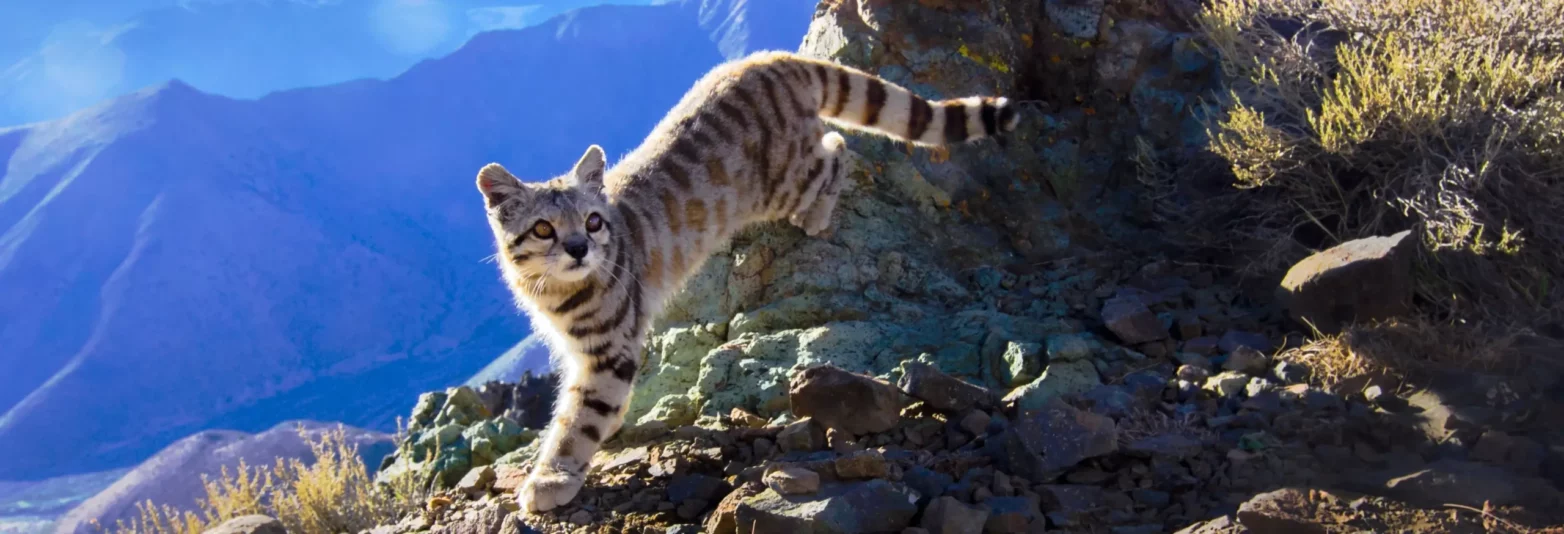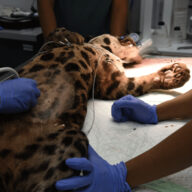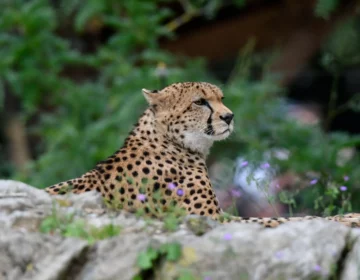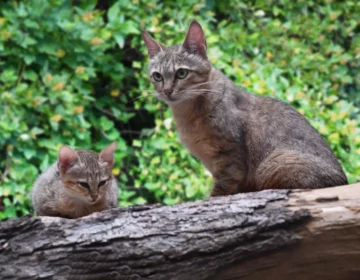
Andean ocelot
Leopardus jacobita
Andean ocelot
APPEARANCE
The Andean Ocelot is almost twice as big as the domestic cat. Its coat is long and dense, pale silver-grey, and marked with brown-yellowish to dark grey or black spots. Visible thick dark stripes run down the sides from the back. Prominent dark grey stripes also run across the chest, and there are narrower dark stripes or spots on the legs that do not form full rings. The underside of the body is white with dark spots. Juveniles have lighter coloration and smaller spots than adults. Thanks to their long and dense fur, the Andean ocelot is very well adapted to the harsh climate of their main habitat of the Andes and northern Patagonia.
The tail is distinctive, very long and downy, measuring about 66-75% of the cat’s body length and marked with 6-9 broad dark brown or black rings. This long tail is probably helpful in maintaining balance during hunting. The Andean Ocelot has relatively large ears and a black nose.
INTERESTING FACT
The Pampa’s ocelot also inhabits this region and is very similar to the Andean ocelot. They can be distinguished by the color of the nose, which is light in the pampas cat, and the length of the tail, which is longer in the Andean cat.
DISTRIBUTION AND HABITAT
The Andean ocelot has very specific habitat requirements. It lives in arid and semi-arid, sparsely vegetated areas at high altitudes. These environments have a heterogeneous geomorphology, and extreme weather conditions and consist mainly of very rocky and steep terrain with scattered sparse vegetation.
The most important factor influencing its occurrence is the presence of its main victims – the mountain vireo and the historical range of the short-tailed chinchilla.
FOOD
The Andean ocelot feeds on small mammals, birds, lizards, and insects. Their main prey is the mountain viscacha.
BEHAVIOUR
Most sightings of Andean cats have occurred during the day. However, recent surveys with camera traps indicate that it is probably a dusk and dawn active species, which is possibly related to the feeding habits of its main prey.
The Andean ocelot is a solitary species. In fact, it is seen in pairs during the mating season and with its young after giving birth. The mating season is believed to last from July to December, and births take place from October to April.
MAIN THREATS
The main threats to this species include habitat degradation and fragmentation, killing in retaliation, and hunting for fur.





